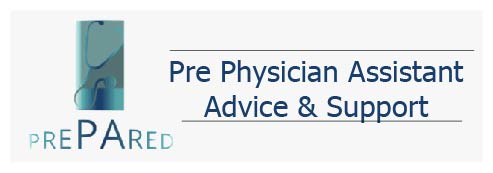PA Resume Tips

You’ve spent years trying to get into PA school and then several more years in PA school. Now it’s finally time to put all of that hard work and training into practice and get a REAL job
One of the first steps in the pursuit of your dream job is whipping your resume into shape. Some PA school graduates may have never had a professional job before, while most have experience in the work force but may not know what employers look for in a resume after graduation. As a practicing PA myself, I’ve listed my insider tips for transforming your resume into the professional document that healthcare employers are looking for!
- Make sure your name and contact information, especially your email address and phone number, are prominently displayed at the top of your resume.
- Organize all of your information into categories: these will become your BOLDED section headings: Education, Professional (or Relevant) Experience, Professional Membership/Leadership positions, Academic Achievements/Publications if applicable (PA/healthcare only), Professional Certifications/Licensure, Relevant Community Service Activities (Optional), Special Skills
- All sections should be organized from most recent to least recent in descending order. For example, your most recent school/degree (MS/MA/MBA/JD) should be listed first with your BS/BA school and degree listed second. This follows in your work history section too; most recent job first, with each proceeding position following down the page in descending order.
- Education: this section should include all secondary school names (optional city/location), degrees conferred, and dates attended. In this section you can also include any significant college, university and professional education honors/achievements (ex. Summa Cum Laude, Phi Beta Kappa, Honors Program, etc.)
- Professional (or Relevant) Experience: this section should include your position title–perhaps bolded or italicized to stand out–the name of the company/organization/healthcare group/provider, the city/location (not address), and dates of employment (month and year suffice).
- If you have a lot of relevant work experience or positions you may want to tailor the positions listed for each job you apply for as opposed to having a laundry list of jobs on your resume. As you get more experience in your desired field, older, less relevant positions can be dropped off. If you had a position that didn’t work out or wasn’t a long tenure and it’s not in the desired specialty you’re now applying for, consider removing it from your resume.
- If this is your first job after PA school and you only had non-healthcare jobs previously, make two sections: Relevant Clinical Rotations (from PA school) and Job Experience, where you list your prior work history. You don’t need to list every job you’ve ever had, just the longest or most professional positions.
- Decide whether each job listing needs a short list of job responsibilities. Some thoughts: jobs like Server at Chili’s or Sales Associate at the Gap don’t really need any further explanation; we all have an idea of what that job entails. But jobs like research assistant and athletic trainer are more nebulous and could reflect a range of responsibilities. You don’t need to list every specific responsibility, just the main ones that convey a high level of responsibility or skill.Lab Assistant– proficient in multiple PCR techniques, created and maintained data tables.Athletic trainer– provided direct patient care through directing therapeutic exercise and injury management. Note how these responsibility descriptions use strong action verbs like create, direct, etc. These verbs should portray the level of responsibility consistent with your actual responsibility (creativity is ok, but bending the truth is not). If you are changing specialties within the PA field, I would also include your job responsibilities at your most recent job. If you are changing jobs within the same specialty, I would not necessarily list your job responsibilities if the new job seems equivalent (outpatient dermatology to another outpatient dermatology job), but if you are changing from Ortho outpatient to Ortho inpatient with surgical responsibilities, you may want to list your pertinent responsibilities. You can always list any responsibilities you would like to highlight.
- Professional Membership/Leadership Positions: this is where you list any professional societies you are a member of (AAPA, specialty professional groups) or leadership positions held (in PA school or since–healthcare related)
- Academic Achievements/Publications: this section is for any publications, abstracts, posters or presentations you’ve contributed to in a healthcare field.
- Professional Certifications/Licensure: this section lists your professional certifications, licenses, boarding, special certifications/training (ACLS, PALS), with license numbers and expiration dates as applicable. List your most recent/relevant ones first (ex. PA certification and licensure info followed by EMT/Resp. Therapy/Nursing info)
- (Optional) Relevant Community Service Activities: this section provides a way for you to share any other positions, leadership roles, or volunteer work you’d like to highlight. Activities might include a healthcare for the homeless event you organized, a church mission group you belong to, a position on your school’s admissions committee, or as a volunteer lecturer or clinical preceptor.
- Special Skills: this section lists any foreign language proficiencies, EMR training, special medical procedures, or skills/competencies.
- Your text should be in a size 10-12 professional font (think Arial or Times), so that it is easy to read. Sections may be bolded and separated by lines or empty space. Aim for each listing to take up only one line, so that the eye can skim easily. Shoot for your entire resume to fit on 1 page (usually no more than 2, unless you have many publications/academic achievements).
- Working on your resume also gives you the opportunity to start thinking about who you’ll list as your references. Some people list their references on their resume while others provide them upon request. My resume has a line at the bottom that reads: “References available upon request.” My resume also has a date stamp at the bottom that automatically updates the date the resume was edited so that employers can see your resume is current.
Overall your resume should be a document that easily conveys your work history and highlights your hard-earned accomplishments. I hope this step by step guide can help you organize your achievements onto the page, so that you can put your best foot forward on your way to landing your dream PA job!







